9.20: Clasificación de Plantas
- Page ID
- 108325
\( \newcommand{\vecs}[1]{\overset { \scriptstyle \rightharpoonup} {\mathbf{#1}} } \)
\( \newcommand{\vecd}[1]{\overset{-\!-\!\rightharpoonup}{\vphantom{a}\smash {#1}}} \)
\( \newcommand{\dsum}{\displaystyle\sum\limits} \)
\( \newcommand{\dint}{\displaystyle\int\limits} \)
\( \newcommand{\dlim}{\displaystyle\lim\limits} \)
\( \newcommand{\id}{\mathrm{id}}\) \( \newcommand{\Span}{\mathrm{span}}\)
( \newcommand{\kernel}{\mathrm{null}\,}\) \( \newcommand{\range}{\mathrm{range}\,}\)
\( \newcommand{\RealPart}{\mathrm{Re}}\) \( \newcommand{\ImaginaryPart}{\mathrm{Im}}\)
\( \newcommand{\Argument}{\mathrm{Arg}}\) \( \newcommand{\norm}[1]{\| #1 \|}\)
\( \newcommand{\inner}[2]{\langle #1, #2 \rangle}\)
\( \newcommand{\Span}{\mathrm{span}}\)
\( \newcommand{\id}{\mathrm{id}}\)
\( \newcommand{\Span}{\mathrm{span}}\)
\( \newcommand{\kernel}{\mathrm{null}\,}\)
\( \newcommand{\range}{\mathrm{range}\,}\)
\( \newcommand{\RealPart}{\mathrm{Re}}\)
\( \newcommand{\ImaginaryPart}{\mathrm{Im}}\)
\( \newcommand{\Argument}{\mathrm{Arg}}\)
\( \newcommand{\norm}[1]{\| #1 \|}\)
\( \newcommand{\inner}[2]{\langle #1, #2 \rangle}\)
\( \newcommand{\Span}{\mathrm{span}}\) \( \newcommand{\AA}{\unicode[.8,0]{x212B}}\)
\( \newcommand{\vectorA}[1]{\vec{#1}} % arrow\)
\( \newcommand{\vectorAt}[1]{\vec{\text{#1}}} % arrow\)
\( \newcommand{\vectorB}[1]{\overset { \scriptstyle \rightharpoonup} {\mathbf{#1}} } \)
\( \newcommand{\vectorC}[1]{\textbf{#1}} \)
\( \newcommand{\vectorD}[1]{\overrightarrow{#1}} \)
\( \newcommand{\vectorDt}[1]{\overrightarrow{\text{#1}}} \)
\( \newcommand{\vectE}[1]{\overset{-\!-\!\rightharpoonup}{\vphantom{a}\smash{\mathbf {#1}}}} \)
\( \newcommand{\vecs}[1]{\overset { \scriptstyle \rightharpoonup} {\mathbf{#1}} } \)
\( \newcommand{\vecd}[1]{\overset{-\!-\!\rightharpoonup}{\vphantom{a}\smash {#1}}} \)
\(\newcommand{\avec}{\mathbf a}\) \(\newcommand{\bvec}{\mathbf b}\) \(\newcommand{\cvec}{\mathbf c}\) \(\newcommand{\dvec}{\mathbf d}\) \(\newcommand{\dtil}{\widetilde{\mathbf d}}\) \(\newcommand{\evec}{\mathbf e}\) \(\newcommand{\fvec}{\mathbf f}\) \(\newcommand{\nvec}{\mathbf n}\) \(\newcommand{\pvec}{\mathbf p}\) \(\newcommand{\qvec}{\mathbf q}\) \(\newcommand{\svec}{\mathbf s}\) \(\newcommand{\tvec}{\mathbf t}\) \(\newcommand{\uvec}{\mathbf u}\) \(\newcommand{\vvec}{\mathbf v}\) \(\newcommand{\wvec}{\mathbf w}\) \(\newcommand{\xvec}{\mathbf x}\) \(\newcommand{\yvec}{\mathbf y}\) \(\newcommand{\zvec}{\mathbf z}\) \(\newcommand{\rvec}{\mathbf r}\) \(\newcommand{\mvec}{\mathbf m}\) \(\newcommand{\zerovec}{\mathbf 0}\) \(\newcommand{\onevec}{\mathbf 1}\) \(\newcommand{\real}{\mathbb R}\) \(\newcommand{\twovec}[2]{\left[\begin{array}{r}#1 \\ #2 \end{array}\right]}\) \(\newcommand{\ctwovec}[2]{\left[\begin{array}{c}#1 \\ #2 \end{array}\right]}\) \(\newcommand{\threevec}[3]{\left[\begin{array}{r}#1 \\ #2 \\ #3 \end{array}\right]}\) \(\newcommand{\cthreevec}[3]{\left[\begin{array}{c}#1 \\ #2 \\ #3 \end{array}\right]}\) \(\newcommand{\fourvec}[4]{\left[\begin{array}{r}#1 \\ #2 \\ #3 \\ #4 \end{array}\right]}\) \(\newcommand{\cfourvec}[4]{\left[\begin{array}{c}#1 \\ #2 \\ #3 \\ #4 \end{array}\right]}\) \(\newcommand{\fivevec}[5]{\left[\begin{array}{r}#1 \\ #2 \\ #3 \\ #4 \\ #5 \\ \end{array}\right]}\) \(\newcommand{\cfivevec}[5]{\left[\begin{array}{c}#1 \\ #2 \\ #3 \\ #4 \\ #5 \\ \end{array}\right]}\) \(\newcommand{\mattwo}[4]{\left[\begin{array}{rr}#1 \amp #2 \\ #3 \amp #4 \\ \end{array}\right]}\) \(\newcommand{\laspan}[1]{\text{Span}\{#1\}}\) \(\newcommand{\bcal}{\cal B}\) \(\newcommand{\ccal}{\cal C}\) \(\newcommand{\scal}{\cal S}\) \(\newcommand{\wcal}{\cal W}\) \(\newcommand{\ecal}{\cal E}\) \(\newcommand{\coords}[2]{\left\{#1\right\}_{#2}}\) \(\newcommand{\gray}[1]{\color{gray}{#1}}\) \(\newcommand{\lgray}[1]{\color{lightgray}{#1}}\) \(\newcommand{\rank}{\operatorname{rank}}\) \(\newcommand{\row}{\text{Row}}\) \(\newcommand{\col}{\text{Col}}\) \(\renewcommand{\row}{\text{Row}}\) \(\newcommand{\nul}{\text{Nul}}\) \(\newcommand{\var}{\text{Var}}\) \(\newcommand{\corr}{\text{corr}}\) \(\newcommand{\len}[1]{\left|#1\right|}\) \(\newcommand{\bbar}{\overline{\bvec}}\) \(\newcommand{\bhat}{\widehat{\bvec}}\) \(\newcommand{\bperp}{\bvec^\perp}\) \(\newcommand{\xhat}{\widehat{\xvec}}\) \(\newcommand{\vhat}{\widehat{\vvec}}\) \(\newcommand{\uhat}{\widehat{\uvec}}\) \(\newcommand{\what}{\widehat{\wvec}}\) \(\newcommand{\Sighat}{\widehat{\Sigma}}\) \(\newcommand{\lt}{<}\) \(\newcommand{\gt}{>}\) \(\newcommand{\amp}{&}\) \(\definecolor{fillinmathshade}{gray}{0.9}\)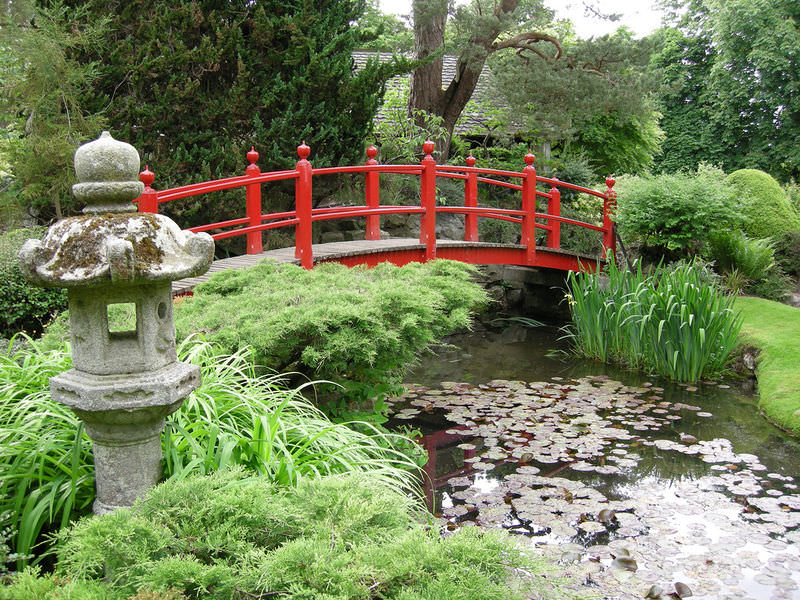
¿Cómo sabes a qué grupo pertenece una planta en particular?
Tantos tipos diferentes de plantas. ¿La planta tiene raíces? ¿O flores? ¿O solo semillas? ¿O raíces y tallos pero no semillas? Todas estas son características utilizadas para clasificar las plantas. ¿Cuántos tipos diferentes de plantas ves en este jardín japonés?
Clasificación de Plantas
La clasificación científica de las plantas terrestres modernas está en constante revisión. De manera informal, las plantas terrestres pueden clasificarse en los grupos enumerados en la Tabla siguiente. En esta tabla se organizan grandes divisiones y tipos de plantas terrestres modernas. ¿Por qué los primeros cinco tipos de plantas requieren un hábitat húmedo?
La división más básica es entre plantas no vasculares y plantas vasculares. Las plantas vasculares se dividen además en aquellas que se reproducen sin semillas y las que se reproducen con semillas. Las plantas semilleras, a su vez, se dividen en las que producen semillas en conos y las que producen semillas en los ovarios de las flores. Las plantas semilleras se llaman gimnospermas. Las plantas semilleras llamadas angiospermas producen semillas en los ovarios de las flores.
| División Mayor | Tipos de Plantas | No. de Especies Vivas | Descripción |
|---|---|---|---|
| Plantas no vasculares | |||
 |
hepáticas | 7,000 | |
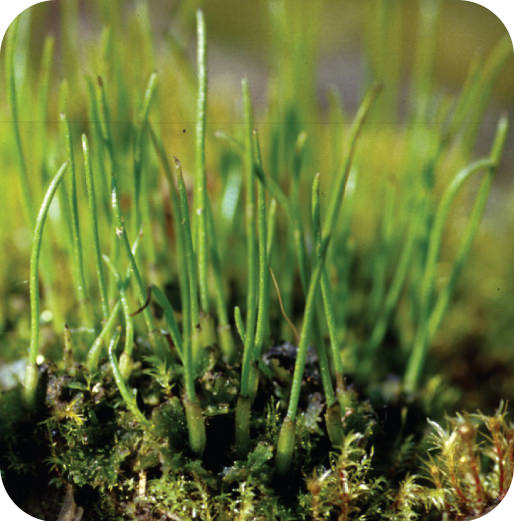 |
Hornworts | 150 | |
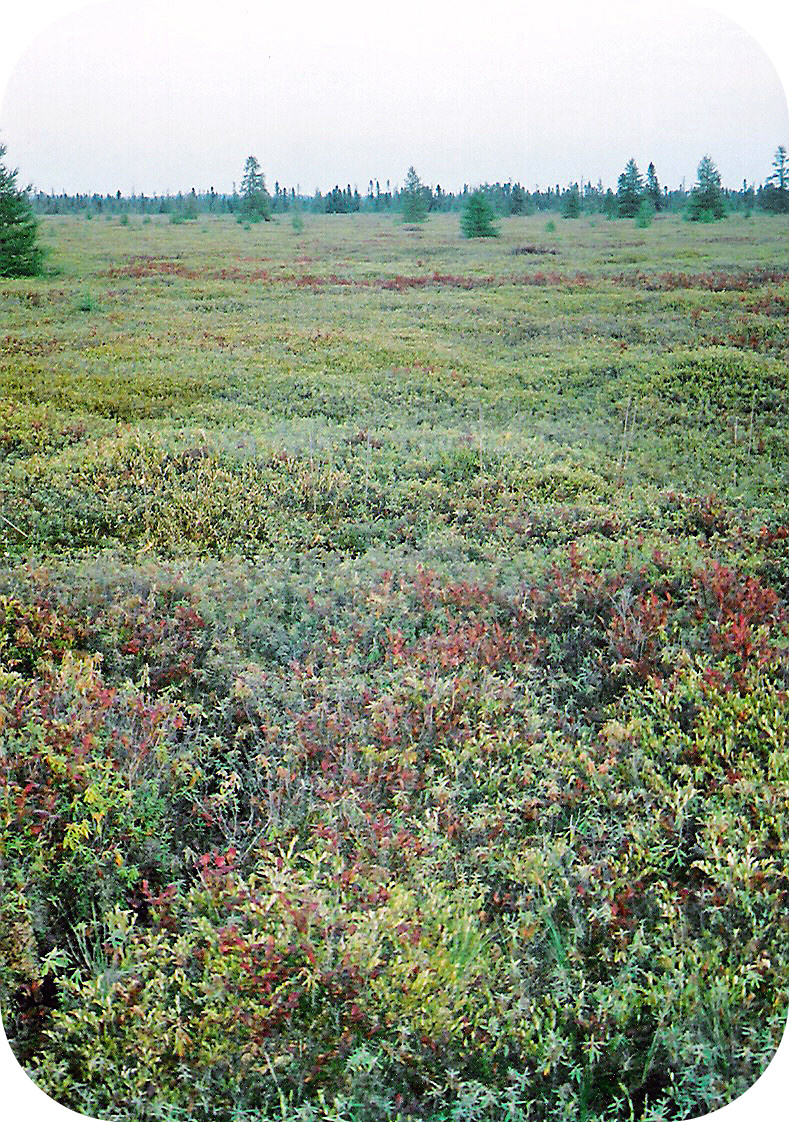 |
Musgos | 10,000 | Carecen de hojas y raíces. No tienen tallos, por lo que crecen bajo hasta el suelo. Se reproducen con esporas. Necesitan un hábitat húmedo. |
| Plantas Vasculares | |||
 |
Clubmusses | 1,200 | Tienen raíces y hojas diminutas. No tienen tallos, por lo que crecen bajo hasta el suelo. Se reproducen con esporas. Necesitan un hábitat húmedo. |
 |
Helechos | 11,000 | Tienen hojas grandes en frondas. Tienen tallos rígidos, por lo que son altos creciendo; algunos son árboles. Se reproducen con esporas. Necesitan un hábitat húmedo. |
 |
Ginkgoes | 1 | |
 |
Cicads | 160 | |
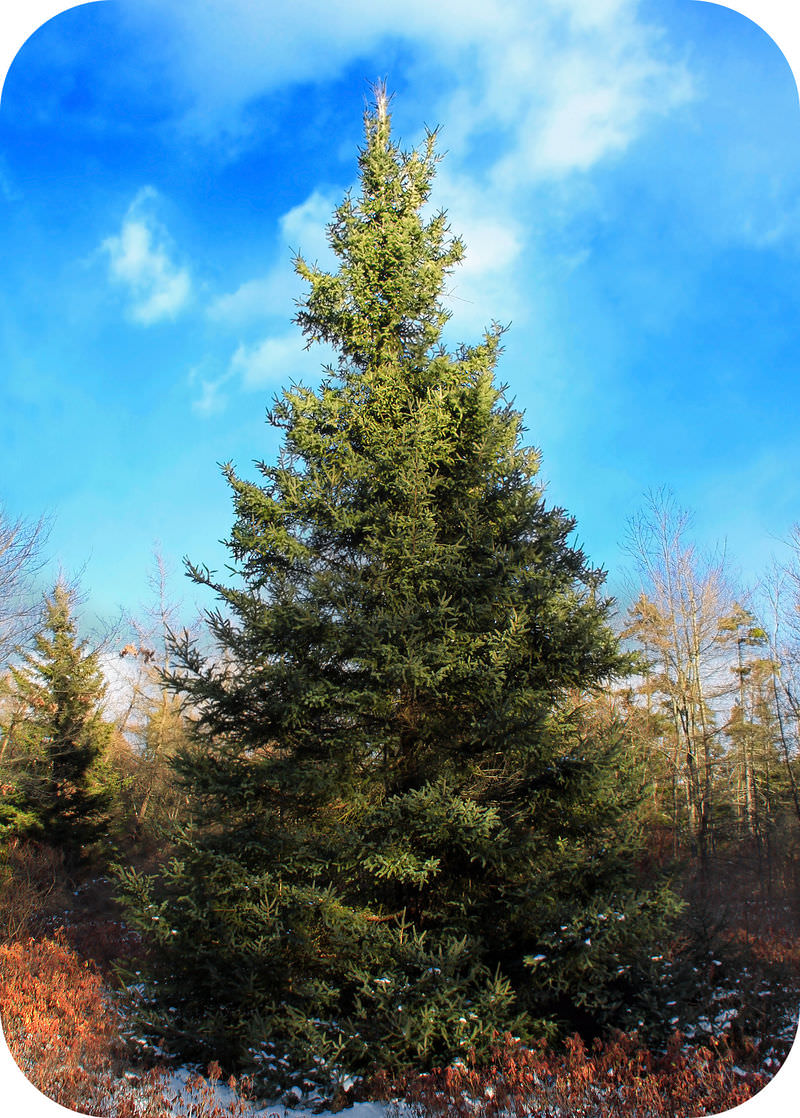 |
Coníferas | 700 | |
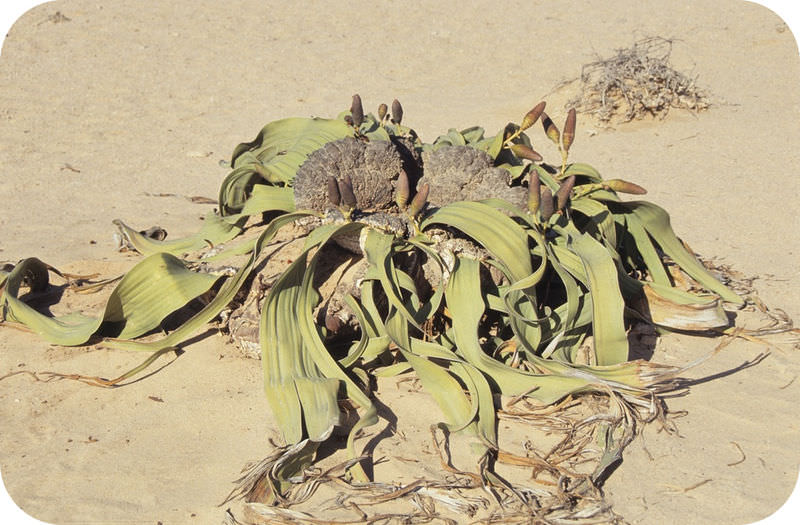 |
Gnetae | 70 | La mayoría son árboles con troncos de madera. Tienen adaptaciones a la sequedad como las hojas en forma de aguja. Se reproducen con semillas y polen. Producen semillas en conos. |
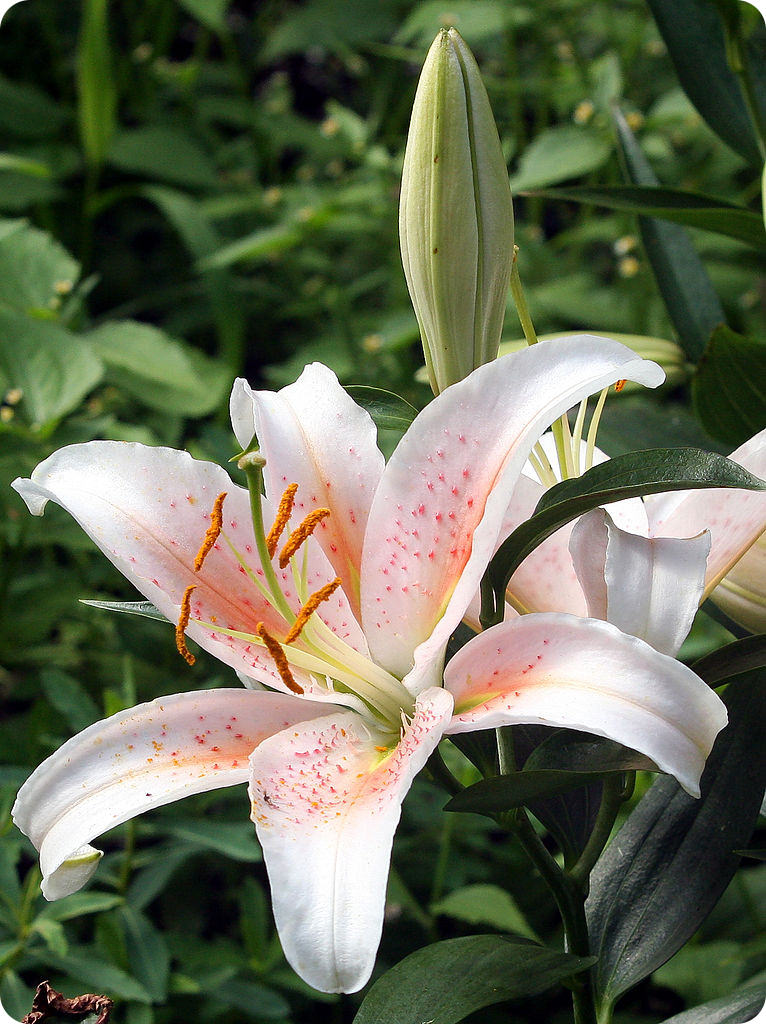 |
Plantas con Floración | 258,650 | Tienen una tremenda diversidad en tamaño, forma y otras características. Se reproducen con semillas y polen. Producen semillas en los ovarios de las flores. Los ovarios pueden convertirse en frutos, lo que mejora la dispersión de las semillas. |
Resumen
La división más básica de las plantas vivas es entre plantas no vasculares y vasculares.
- Las plantas vasculares se dividen en plantas sin semillas y plantas sin semillas.
- Las plantas semilleras llamadas gimnospermas producen semillas en conos.
- Las plantas semilleras llamadas angiospermas producen semillas en los ovarios de las flores.
Revisar
- Compara los diferentes tipos de plantas en la Tabla anterior. ¿Qué tipo de plantas dirías que tiene más éxito? Apoye tu respuesta con datos de la tabla.
| Imagen | Referencia | Atribuciones |
 |
[Figura 1] | Licencia: CC BY-NC |
 |
[Figura 2] | Licencia: CC BY-NC |
 |
[Figura 3] | Licencia: CC BY-NC |
 |
[Figura 4] | Licencia: CC BY-NC |
 |
[Figura 5] | Licencia: CC BY-NC |
 |
[Figura 6] | Licencia: CC BY-NC |
 |
[Figura 7] | Licencia: CC BY-NC |
 |
[Figura 8] | Licencia: CC BY-NC |
 |
[Figura 9] | Licencia: CC BY-NC |
 |
[Figura 10] | Licencia: CC BY-NC |
 |
[Figura 11] | Licencia: CC BY-NC |

